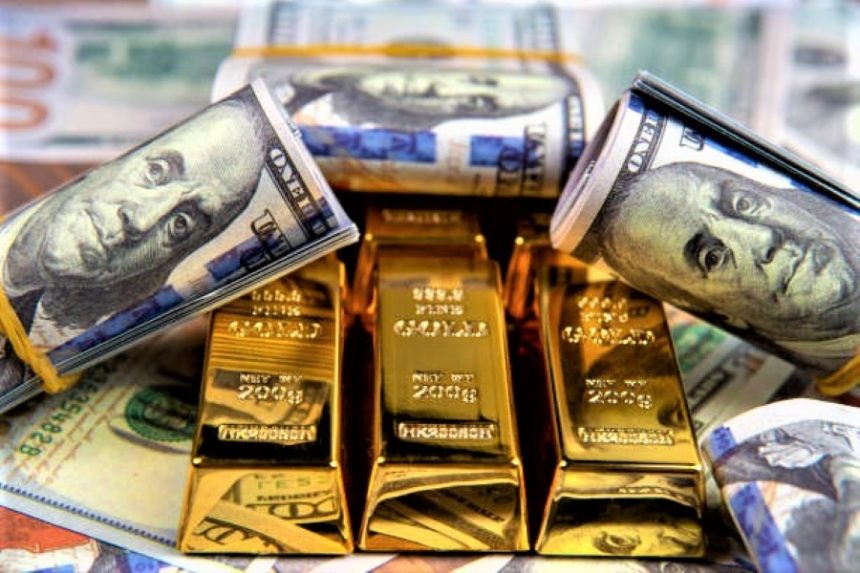Gold Faces Intraday Losses Amid Market Rout.
Gold prices (XAUUSD) faced intraday losses on Tuesday as investors reacted to heightened geopolitical tensions and a broader market downturn. After reaching an all-time high of $2,956 on Monday, gold retreated to around $2,940 as the market digested the Trump administration’s latest move to tighten restrictions on China’s semiconductor industry.
The renewed concerns over trade wars and economic instability triggered a shift in market sentiment, prompting traders to seek safe-haven assets such as bonds. As a result, US Treasury yields dropped, equities fell sharply across global markets, and the precious metal experienced a pullback despite its previous bullish momentum.
Geopolitical Tensions: The Trump Administration’s Harder Stance on China
One of the major catalysts for the current market turmoil is the Trump administration’s intensified efforts to restrict China’s technological advancements, particularly in the semiconductor sector. The new regulations aim to curb China’s ability to develop a domestic semiconductor industry that could enhance its artificial intelligence (AI) and military capabilities.
According to Bloomberg, the administration is not only imposing stricter semiconductor export controls but also urging allies to enforce similar restrictions. The broader strategy is to limit China’s access to advanced chip-making technologies, which are crucial for economic growth, defense applications, and AI developments.
Market Reaction: A Flight to Safe-Haven Assets
The geopolitical uncertainty surrounding China and the US led to a broad selloff in equities, with markets across Asia, Europe, and the US facing substantial losses. Investors, concerned about the economic implications of escalating tensions, moved funds into bonds, pushing bond prices higher and yields lower.
This inverse relationship between bond yields and bond prices has intensified, with US Treasury yields declining further on Tuesday. The CME FedWatch tool also shows a higher probability of a 25-basis point interest rate cut by June, currently estimated at 50.0%, while the chances of a rate pause have decreased to 32.6%.
Gold’s Short-Term Performance and Outlook
Despite its slight pullback, gold remains one of the most attractive assets for investors in times of economic uncertainty. The metal traditionally viewed as a hedge against inflation, geopolitical risks, and financial instability.
Key Resistance and Support Levels: Gold’s immediate support level is at $2,920, while the next major resistance sits around $2,960–$2,970. A break above $2,970 could push gold to new record highs, while a decline below $2,920 might trigger further downside movement.
Market Volatility and Investor Sentiment: The current market rout, combined with interest rate expectations, could lead to higher volatility in the short term. Investors are closely monitoring Federal Reserve speeches and upcoming economic data for more clarity on the monetary policy outlook.
Key Economic Events to Watch
Aside from geopolitical tensions, investors are also focused on macroeconomic indicators, especially the upcoming Personal Consumption Expenditures (PCE) Price Index report scheduled for Friday.
The PCE index is the Federal Reserve’s preferred inflation gauge, and its results will play a crucial role in shaping future interest rate decisions. Analysts expect the indicator to show inflation slowing to its lowest level since June, which could reinforce expectations of rate cuts later in 2024.
Additionally, several Federal Reserve officials are scheduled to speak on Tuesday, providing further insights into the economic outlook and monetary policy direction:
1. Michael Barr (Fed Vice Chair for Supervision) will deliver a speech on financial stability at 16:45 GMT in New Haven, Connecticut.
2. Tom Barkin (Richmond Fed President) is set to discuss inflation trends and monetary policy at 18:00 GMT in an event hosted by the Rotary Club of Richmond.
3. Lorie Logan (Dallas Fed President) will address the future of the Federal Reserve’s balance sheet at 21:15 GMT at the Bank of England’s BEAR research conference in London.
The Federal Reserve’s Dilemma: Inflation vs. Economic Growth
The Federal Reserve has been balancing its approach to inflation control and economic growth. Although inflation has cooled significantly from its peak in 2022, it remains above the Fed’s 2% target.
If the PCE data shows further cooling inflation, it may increase the likelihood of rate cuts in June, boosting demand for gold.
If inflation remains stubbornly high, the Fed may hold rates steady longer, potentially weighing on gold prices.
Global Market Impact: Equities, Currencies, and Commodities
The broader market impact of the current geopolitical and economic uncertainty extends beyond gold:
Equities: Stock markets are in the red, with Asian, European, and US futures trading lower. Investors are worried that prolonged US-China tensions could disrupt global supply chains and hurt corporate earnings.
US Dollar Strength: The US Dollar Index (DXY) is holding steady as investors assess the implications of a potential rate cut. A weaker dollar typically supports higher gold prices, while a stronger dollar can put pressure on the metal.
Oil and Other Commodities: Oil prices have remained volatile as the market weighs the potential impact of economic slowdowns on demand. Other safe-haven assets like silver and platinum are also experiencing increased trading activity.
Technical Analysis: Where Is Gold Headed Next?
Gold’s price action in the coming days will depend on several technical and fundamental factors.
Bullish Scenario: If geopolitical tensions escalate further, safe-haven demand for gold could push prices above $2,970, setting the stage for a potential test of the $3,000 psychological level.
Bearish Scenario: If bond yields stabilize and risk appetite returns, gold could see a deeper pullback toward $2,900 or lower.
The Relative Strength Index (RSI) on gold’s daily chart suggests overbought conditions, meaning a temporary consolidation or pullback is possible before another move higher.
Conclusion: Key Takeaways for Traders and Investors
1. Gold remains in a strong long-term uptrend, driven by geopolitical risks, economic uncertainty, and expectations of lower interest rates.
2. The Trump administration’s move to tighten semiconductor restrictions on China has heightened market volatility, pushing investors toward safe-haven assets like gold and bonds.
3. The Federal Reserve’s next steps will be crucial, with Friday’s PCE inflation data expected to influence rate-cut expectations.
4. Technical levels suggest key support at $2,920 and resistance at $2,960–$2,970, with a potential test of $3,000 if momentum continues.
5. Market participants should closely watch Fed speeches and global equity trends, as they will provide further direction for gold prices.
While gold has experienced short-term intraday losses, its long-term bullish outlook remains intact as traders seek refuge from economic and political uncertainties. Investors should remain vigilant and adapt to shifting market dynamics in the coming days.









